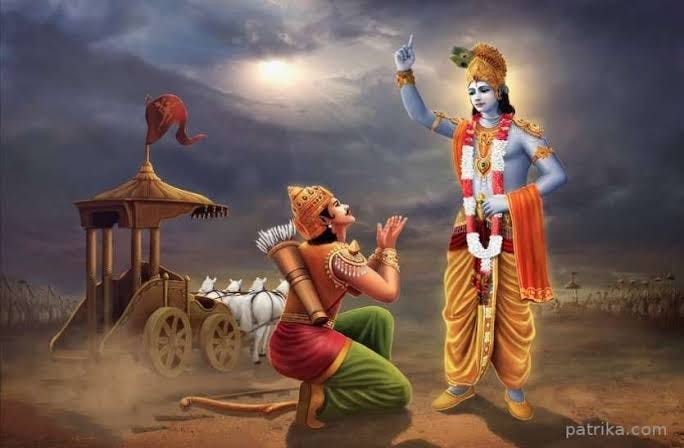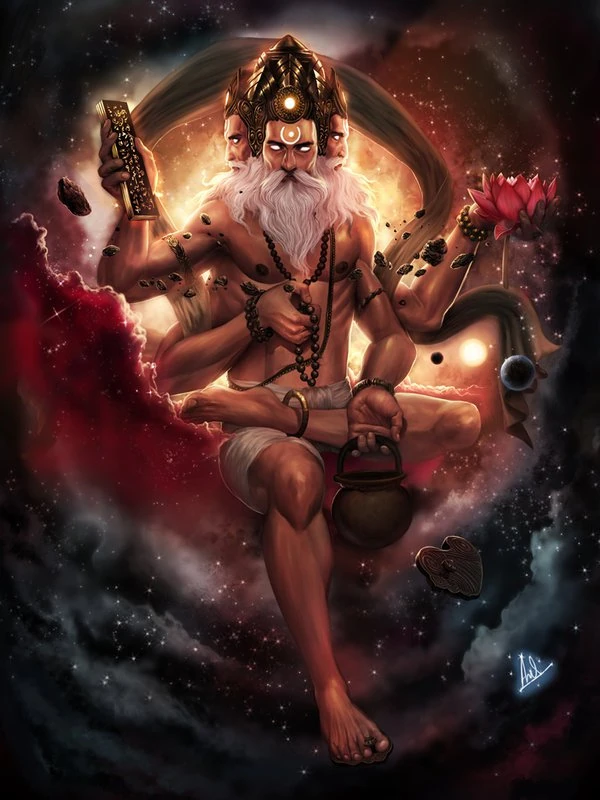
"When meditation is mastered, the mind is unwavering like the flame of a lamp in a windless place." – Bhagavad Gita 6.19

Time is one of the deepest mysteries of existence. It flows endlessly, carrying stars, galaxies, and human lives with it. Yet what exactly is time? Is it absolute, uniform, and universal, or is it relative and dependent on the observer? In the 20th century, Albert Einstein revolutionised physics with his theory of relativity, revealing that time is not fixed but can stretch and contract depending on motion and gravity. Over a millennium before him, however, the Vedic tradition of India grappled with the same enigmas and described strikingly similar ideas through its cosmic vision.
This article explores how the Vedic sages anticipated concepts resembling time dilation and how Einstein’s relativity can be seen as a scientific echo of insights embedded in the Vedas, the Purāṇas, and the Mahābhārata.
Before Einstein, Newton’s worldview dominated: time was absolute, ticking uniformly throughout the universe. Einstein’s special relativity (1905) shattered this assumption. Two key results emerged: Time slows down for fast-moving observers: If you travel close to the speed of light, your clock runs slower relative to someone at rest. Time warps in a gravitational field: General relativity (1915) showed that near massive bodies like stars and black holes, time itself bends and flows at different rates. This phenomenon is known as time dilation. It is not speculation—GPS satellites today must adjust their onboard clocks for both gravitational and velocity-induced dilation, or navigation would fail. Thus, Einstein showed that time is woven into space and matter, forming the fabric of spacetime.
The Vedas and Purāṇas present a vision of time that is both cyclical and relative. Far from a uniform flow, time is seen as perceived differently by beings in different realms of existence. The Sanskrit word kāla signifies not just time but also destiny and change—the very principle of transformation in the cosmos. Some essential features of Vedic time: Cyclic nature: Vast epochs (yugas) repeat endlessly in cycles of creation and dissolution. Multiple scales: Time flows differently for gods (devas), humans, and other beings. Relativity: The perception of a “day” or “year” depends on one’s plane of existence.
One of the most striking parallels to relativity appears in the Bhāgavata Purāṇa (9.3.28–32). King Kakudmi takes his daughter Revati to Brahmaloka, the realm of Brahmā, to seek a suitable husband. They wait briefly for Brahmā to finish listening to music. When they return to Earth, they discover that: “Many ages had passed, and all their contemporaries were long gone. Time had flowed differently in Brahmaloka than on Earth.” This is essentially time dilation: what seemed like minutes in Brahmaloka translated to thousands of years on Earth.
The Mahābhārata contains similar narratives. In the story of King Raivata (another name for Kakudmi), the same theme emerges—travel to a higher realm, return to find that aeons have passed. In another episode, Arjuna is taken by the celestial nymph Urvaśī to the heavenly realms, where time flows differently than on Earth. The principle is the same: time is relative, contingent upon location and dimension.
When Einstein said, “Time is what the clock measures,” he was grounding time in perception and measurement, not in an absolute entity. Similarly, the Vedas ground time in experience, perspective, and cosmic order (ṛta). Let’s map some connections: Time dilation by velocity (Einstein) ↔ Different realms of existence (Vedas). Motion and energy shift perception of time in relativity. Higher or lower dimensions in Vedic cosmology shift perception of time. Gravitational time dilation (Einstein) ↔ Hierarchy of lokas (Vedas). Stronger gravity slows time. Higher spiritual realms experience time differently from Earth. Spacetime curvature ↔ Cyclic creation and dissolution. The cosmos is not a static container but a dynamic, curved, cyclical reality.
Perhaps the deepest connection lies in the metaphysical interpretation. Einstein once remarked: “The distinction between past, present, and future is only a stubbornly persistent illusion.” The Upanishads echo this sentiment. In the ultimate reality of Brahman, time does not exist—it is a projection of Māyā, the power that manifests the universe. For Einstein, the block universe of relativity contains all events—past, present, and future—already laid out in spacetime. For Vedānta, time itself is a construct, relevant only within the field of prakṛti (material nature), not in the eternal.
Bringing Einstein and the Vedas together is not about claiming “the ancients knew relativity” in a literal sense. Rather, it highlights how different knowledge systems converge on similar insights about the relativity of time. For science, this is tested through equations, satellites, and experiments. For the Vedas, it is conveyed through myth, allegory, and spiritual vision. Both suggest that time is not fixed but deeply contextual, relative, and ultimately transcended.
Einstein peered into the mathematics of spacetime and discovered time dilation. The Vedic ṛṣis gazed into the depths of consciousness and described cosmic timescales and relative flows of time. When the two meet, they remind us of a profound truth: human understanding of reality does not belong to one civilisation or era alone. The sages of the past and the scientists of the present are fellow travellers, pointing towards the same mystery—that time is not what it seems, and perhaps beyond time lies the eternal. In the words of the Bhagavad Gītā (11.32): “kālo ’smi loka-kṣhaya-kṛt pravṛddho” — “I am Time, the great destroyer of worlds.” Time dilates, contracts, deceives, and destroys. Yet in realising its relativity, both Einstein and the Vedas urge us to look beyond—to the timeless.